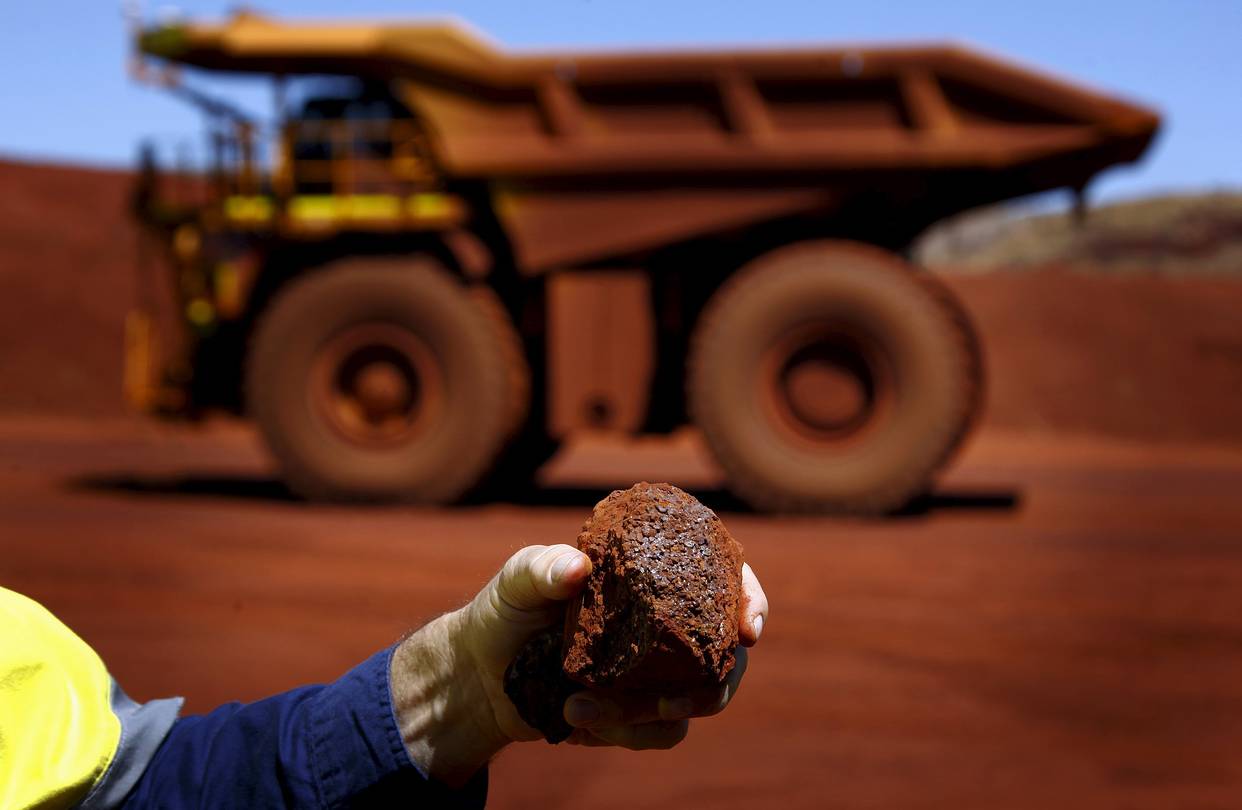Another bust, another boom and iron ore miners and the government are at it again.
Miners have just recently come out of survival mode, as prices are rising. Mostly privately-owned, they are anxious to ride the tide. But the government has dug its heels in and refuses to let go of its price controls and export restrictions.
Many note that the 11th and the incoming 12th administrations’ policies go against President Hassan Rouhani’s mantra that “the government should give up [control of] the economy” and “help create a competitive environment”. He made the comments a month after his reelection in June, while addressing lawmakers.
Like most issues in Iran’s economy, it is hard to take sides here. Miners have proven to forego expansion and moving toward higher value-added goods when left on their own, and the Ministry of Industries, Mining and Trade is hell-bent on prioritizing steelmakers even at the cost of miners’ profitability. “Balance” is the key concept missing here.
Iran’s steel industry is envisioned to become the world’s sixth largest by expanding production capacity to 55 million tons by 2025. That needs a lot of iron ore concentrate and pellets, and the export of granulated ore goes against this.
There is no one-size-fits-all solution here as policies must change dynamically based on global trends. The sector’s development model should change to maximizing sales and profit during boom, and investing in expansion during the bust period, which requires a change in strategy for both miners and government officials.
Producers Raise Concerns in the Name of Investors
An open letter reportedly written by “800 iron ore investors” addressing President Rouhani appeared on local media last week. The authors warned the president that “the iron ore sector, as one of the pillars of economic development, will suffer a heavy setback if its current challenges are not addressed”.
Interestingly, similar letters appeared in 2016 and 2015 and were attributed to “investors”. It is notable that all the letters were based on virtually the same talking points, which mostly reflect the concerns of an industry executive rather than a small non-institutional investor.
One would infer that the letters are actually the lobbying attempt of Iran’s largest private miners Chadormalu and Golgohar and representatives of other producers in Iron Ore Producers & Exporters Association of Iran.
Rouhani is expected to announce his Cabinet picks soon and the letter reads as a plea to pick a minister of industries, mining and trade who “is willing to give up economic interventionism and promote the private sector” so that miners can cash in on rising global prices.
According to the letter, iron ore mines must extract 160 million tons of ore and produce 91 million tons of processed goods to make production of 55 million tons of steel possible by 2025. This means miners should expand, but a mix of state-enforced pricing, export duties and high mining royalties have retarded the industry’s development process.
State-enforced pricing is among the primary concerns. How it works in Iran is that concentrate and pellet prices are determined as a percentage of Khouzestan Steel Company’s base ingot price. Basically, this prevents global iron ore fluctuations from impacting prices in Iran.
“This [percentage] is so low that Iran is basically providing its steelmakers with the cheapest iron ore in the world,” the letter reads. “The government must give up enforced pricing in all industries and embrace supply and demand mechanisms as a successful global model.”
This is while the government also slaps up to 15% in export duties on pellet shipments and has been planning to stop concentrate exports, too. In effect, the government both sets the prices and determines the sector’s trade strategies.
“The iron ore industry pays 25% in income tax, 9% in value-added tax and environmental taxes just like any other industry, and should be able to operate freely just like them,” it said.
The letter also slammed what it called “heavy and unjustified” mining royalties, contending that what makes it unreasonable is that it is collected as a flat percentage on the miners’ total sales rather than profit–a practice unheard of across the world.
Iron Ore’s Wild Ride
Things have been topsy-turvy for iron ore in recent years, regularly evading forecasts.
Analysts diverge on whether to bet on the ore’s recent near 30% rally to $70 per ton on sustained demand from China. Bloomberg and Goldman Sachs forecast this year’s second half to sustain growth, though bearish next year amid prospects for a worldwide glut.
This rally comes after a freefall from $90 per ton in early 2017 to near $55 in June. The previous high was also the result of a rally starting from the same $55 lows in September 2016. The worst of the worst was two years ago, however, as prices bottomed to less than $40 in December 2015, the lowest for daily data since at least 2009. The decline had initiated two months before that, according to data from Metal Bulletin.
Interestingly, in Iran, each global boom in price was followed by lobbying attempts and letters aimed at getting rid of enforced pricing. Cash-strapped local producers could not afford to miss the opportunity, but in effect they were never able to benefit unless they could ramp up their exports.



